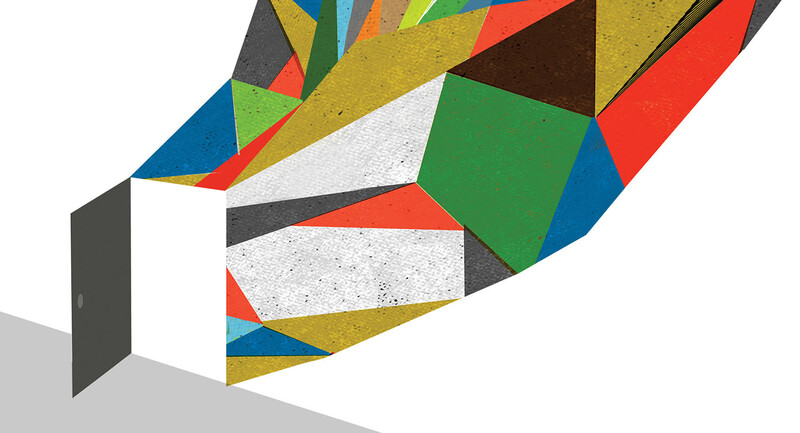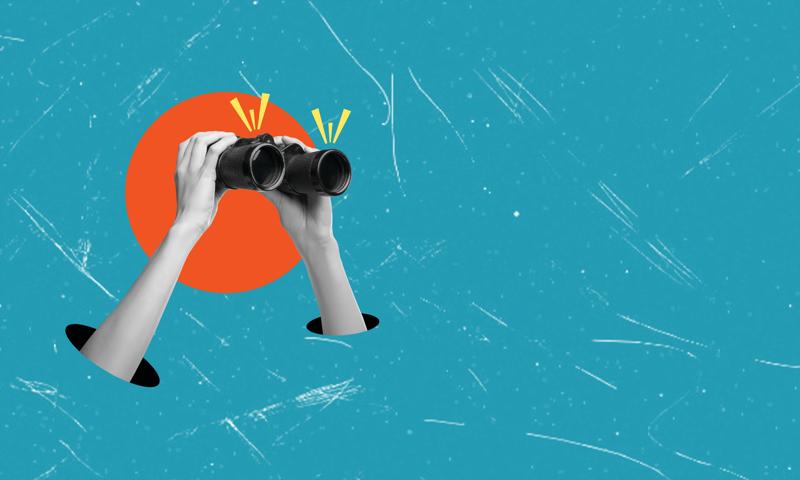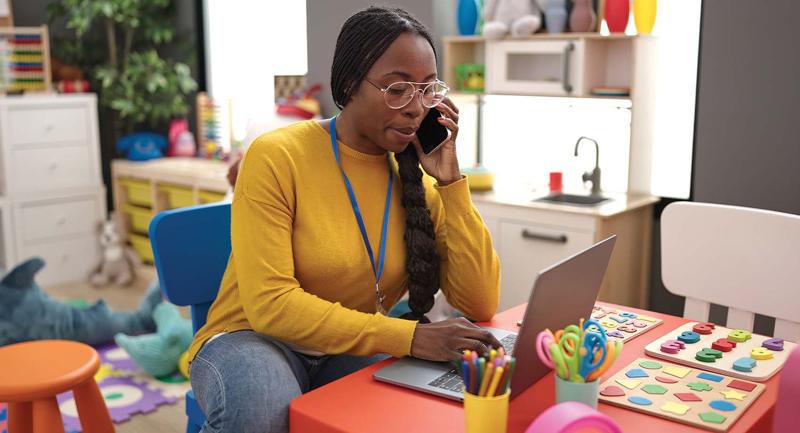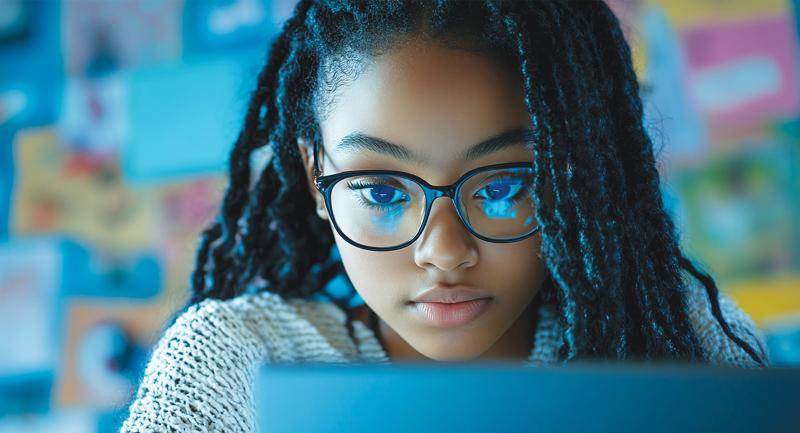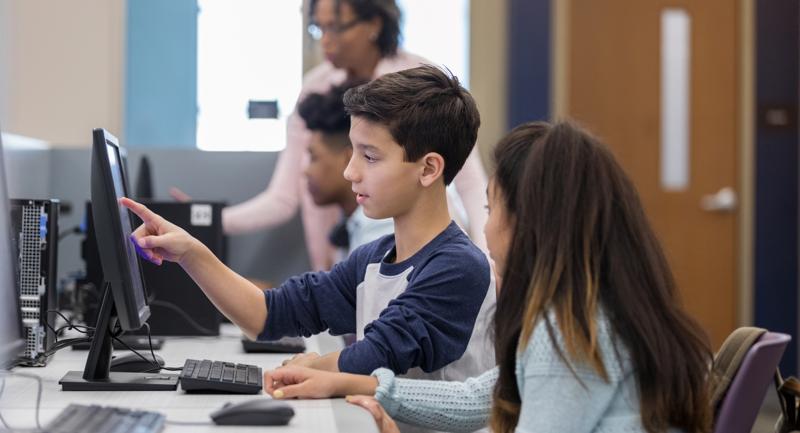COVID-19 has turned schooling into a universal large-scale experiment. Education systems, schools, and classrooms have had to stop many old practices and invent new ones. These changes were difficult and undertaken in a period of social crisis. However, as we return to school this fall, it would be a great mistake to slip back into pre-pandemic ways of functioning. Perhaps some of what we stopped, like state standardized testing in some cases (Gwertz, 2020), should not be returned to and some of what we built or ramped up, like certain aspects of remote learning, should continue.
Changing the Way Learning Happens
Remote learning, of course, is not new. But COVID-19 made it universal, for all teachers and all students. School systems’ response to the pandemic ultimately provided internet access and digital devices to millions of students who did not have such access at home prior to the pandemic.
On one hand, it is true that not all teachers and students (especially those who were most vulnerable) had a great experience with remote learning. It is also true that many parents had to quit their jobs to take care of their children at home (something that no one would wish to replicate in the future) and that students missed out on more than an entire year’s worth of socializing with friends at school. In addition, inequities persisted in access to technology and quality of instruction.
Yet remote learning also ushered in potentially positive changes to the way schools operate. First, the pandemic ignited a one-of-a-kind—worldwide—universal learning experience spurred by technology. The design may not have been perfect because of the lack of experience, training, and resources on the part of schools—not to mention the lack of time educators had to discuss, plan, and essentially upend the way instruction was delivered. But it moved educators to action. Education technology researchers and advocates had been trying to convince teachers to make greater use of technology in the classroom for decades without much success. At the very least, remote learning introduced students and teachers to a significantly different learning model, albeit one pieced together through trial and error.
Second, remote learning greatly expanded the way learning happens. Having access to online technologies with permission from parents and teachers meant that students could explore online education resources without being interrupted. It showed them that they could pursue their own learning with less teacher direction and more autonomy. Their learning could go way beyond their classes in schools.
Third, remote learning expanded the definition of learning time. Although learning technically happens all the time, traditional schooling has limited it to in-school seat time and homework time. But remote learning has changed that. Without having to attend school in-person and with access to learning materials 24/7, we no longer have to constrain learning to certain times. Instead, learning and life are intertwined. Learning is life.
Fourth, the switch to remote learning drastically expanded the definition of learning place. It is no longer true that the classroom, or the school, is the only place for knowledge-building. Students can learn even when they are at home from a diverse set of materials and experts. They can also interact with peers from afar.
No score on a national or international assessment can predict a child’s capability for thriving in an uncertain future.
These few things could fundamentally change schooling for the better, if properly integrated with in-person learning. Although remote learning was instituted as an emergency response—and received some warranted pushback from students, families, and educators alike—we should still examine ways to improve it and make it part of our teaching repertoire going forward. With careful planning, virtual learning can supplement and enhance brick-and-mortar instruction.
Three Learning Borders
Our recent experience with remote learning could help us address one of the biggest problems facing schools today: the one-to-many model of education. There is one set of standards, one curriculum, one teacher, one classroom, one test, and one pathway for all students. Although essentially discredited, this model has been in practice for a long time. It fails to meet the diverse needs of all students (Zhao, 2015, 2018a) and fails to prepare students for a world transformed by technology and globalization (Barber, Donnelly, & Rizvi, 2012; Trilling & Fadel, 2009; Wagner, 2008; Zhao, 2012).
The one-to-many model has created borders that define the place and time of learning. These borders determine what, when, and how learning happens; when and how assessment should be conducted; and when a person is ready to graduate and enter society. These borders also define the future and social mobility of learners.
Three especially pernicious borders need to be redefined: curriculum, testing, and classroom borders.
Curriculum Borders
All schools operate with some sort of curriculum. The curriculum decides what children should learn in school and how fast the learning should take place. The curriculum is often divided into different grades based on age. Every student needs to walk within the curriculum, completing what is prescribed for him/her/them. Almost by definition, the curriculum creates and limits opportunities for learning. In a sense, curriculum prescribes what is to be learned, forcing schools (in theory) to offer the same learning opportunities to all students. Yet teaching some topics automatically excludes the teaching of other topics.
Curriculum borders have placed tremendous pressure on students and have caused massive damage to learning. Students, whether ready or not, interested or not, are asked to study the same content because it is prescribed by an authoritative body that believes the content is meaningful and necessary. The popular phrase used today is “college- and career-ready.” Some specific authoritative body believes that a particular curriculum can prepare students for college and careers, but there is no empirical evidence that the curriculum a school implements does in fact achieve readiness for anything.
More important, the world is changing faster than ever: How can we be sure that the skills and knowledge we’re teaching today will prepare students for the jobs of tomorrow? And finally, if students are not interested in the prescribed curriculum, they have no other choice but to become disengaged. Disengagement has become a central problem in our schools.
Only half of adolescents are engaged in school and students’ level of engagement drops with each new grade level (Brenneman, 2016). When students are younger, they may just feel bored in school; but when they get older, disengagement can lead to dropping out.
Testing Borders
In the same way that we limit learning with prescribed curricula, we pigeonhole students with standardized tests. These tests are often seen as a valid and reliable way to assess students and set them up for successful futures (Levin, 2012; Zhao, 2018b). Thus, when students do not score well, they are placed in remediation or not allowed to advance to the next grade. Test scores define a student’s value and their opportunities for learning. For example, many groups advocate for all students to be reading on grade level by the end of 3rd grade. The data may indicate that the chances for better outcomes decline if students don’t read well early on. Thus, we should do everything possible to make sure students read proficiently by 3rd grade.
But this is not the whole story. The data may be valid from a certain perspective, but the opportunity for a better education and a better life is not necessarily defined by reading proficiency in 3rd grade. First, the correlation between 3rd grade reading proficiency and future education and life outcomes is more of a reflection of race/ethnicity and socioeconomic status than the role of reading abilities. Those who fail to read by 3rd grade are largely from disadvantaged backgrounds (Annie E. Casey Foundation, 2013). Second, the correlation tells us how ineffective our schools are in educating students who are unable to read at grade level. It is commonly noted that after 3rd grade, more learning is conducted via reading. But can’t that be changed? Can’t schools teach students older than 3rd grade effectively without relying exclusively on their ability to read at grade level?
Placing a student in remediation or holding them back from other learning opportunities can be tremendously damaging, resulting in a loss of confidence, learned helplessness, and a lack of access to opportunities that may develop that student’s inner talent or passion. I believe remote learning can offer the flexibility and time students need to develop these skills.
Classroom Borders
The final way we “border” learning is by organizing students into one classroom where they are taught by one adult teacher. The borders in this case are the physical classroom walls themselves, which limit students’ access to resources outside the classroom. The borders are also what the teacher deems to be legitimate and worthy content and activities. The teacher is typically the only source of instruction for students in this model.
There has been a long history of complaints about teacher-to-student ratios; the debate about class size has been a persistent topic in education (Krueger, Hanushek, & Rice, 2002). Much has also been written about differentiation in the classroom and how difficult it can be to meet the individual needs of students (Tomlinson, 2014). The real problem, as I see it, is the classroom-border mindset. If we begin to understand that students can learn from more than teachers and that teachers are not the only source of knowledge, we begin to imagine a much different learning space. Students can learn from and engage with others, conduct research projects online, and collaboratively participate in explorations online—just as many did during COVID-19.
Students can no longer be the recipients of a pre-planned education; instead they need to become active owners of their learning.
The Future of Education
Remote learning can help remove the borders that constrain students, so it would be a mistake for schools to drop it entirely. However, remote learning does not automatically make learning better. It only provides the opportunity for schools to rethink how education can be offered.
Schools can start by examining their traditional operations. Here are some questions to consider:
Do all students need to follow the same curriculum?
Do all students of the same age need to be taught the same content?
Do all students need to be in the physical classroom five days a week?
Do all students need to be taught by local teachers?
Do all students need to complete the same examinations?
Do all students have to complete 12 years of study?
As the COVID-19 pandemic wanes, educators must reflect on the role students have in their own learning. If schools can thoughtfully but courageously combine remote learning with in-person learning into a new mode of learning, we can truly enable students to personalize their learning as owners and partners of educational change (Zhao, 2011, 2016, 2018a).
Students have rarely been considered an active and intentional partner in designing their own learning. Government-led reforms over the past few decades have played with almost all the essential elements of education. They changed curriculum. They tweaked assessments. They toyed with teachers and teaching. They held school principals accountable. They experimented with class sizes. But they never contemplated involving students in designing their own learning. Students have simply been the recipients of reforms and changes instead of owners and managers of their learning.
The results have not been good. The desired outcomes of the reforms have been excellence and equity—excellence being higher levels of achievement by all students, and equity meaning a closure of the achievement gaps between different groups of students. After many decades of reforms, however, we have not achieved either of these aims. Take the National Assessment of Educational Progress (NAEP) as an example—a test limited in scope, but revealing nonetheless. The 2019 results show that the most basic indicators of educational quality, the assessment of math and reading, have not seen significant improvement since the 1990s (NAEP, 2020a, 2020b). And the achievement gaps between students of higher and lower socioeconomic backgrounds have failed to close over the past half century (Hanushek et al., 2019).
In the meantime, a lot has changed. Today’s world looks drastically different from what it looked like in the 1990s when the international-comparison assessments TIMSS and PISA—both highly problematic in my view—first took global measures of students’ performance and national education policies zeroed in on achievement gaps. The internet was just beginning to take hold, but today, the world could not exist (at least in its current form) without it. Cutting-edge technologies have buried old industries and given life to new ones. No score on a national or international assessment can predict a child’s capability for thriving in an uncertain future.
Students can no longer be the recipients of a pre-planned education; instead, they need to become active owners of their learning (Zhao, 2011). Personalized learning is not done to students. It is done by students. Traditional borders can be broken, and students can engage in a new world of learning enabled by technology. What this will take is for all educators and policymakers to imagine a new environment where remote learning is integrated seamlessly with in-person education. The new learning “normal” is one that makes learning borderless and students the owners of their learning.
Reflect & Discuss
In what ways did remote learning give your students more autonomy? How might you carry forward some pandemic-inspired pedagogical practices?
Do you agree with Zhao that curriculum, testing, and classroom borders limit learning? If so, what alternatives could your school explore to erase or blur some of these borders?




